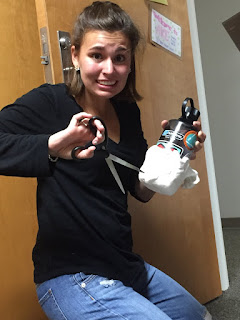Step 1: Back to Sketch-Up... expand dimensions to accommodate for larger water bottle.
Step 2: Raise height to 100mm.
Step 3: Convert to .STL file. E-mailed to profession for further conversion
Step 4: Print!
Step 5: Didn't fail this time! (Failed 5 times for the prototype).
Step 6: Test out on a desk.
Step 7: Test out with a waterbottle.
Step 8: Celebrate!!!
Future Prospects: Patent design and make money! (;


















